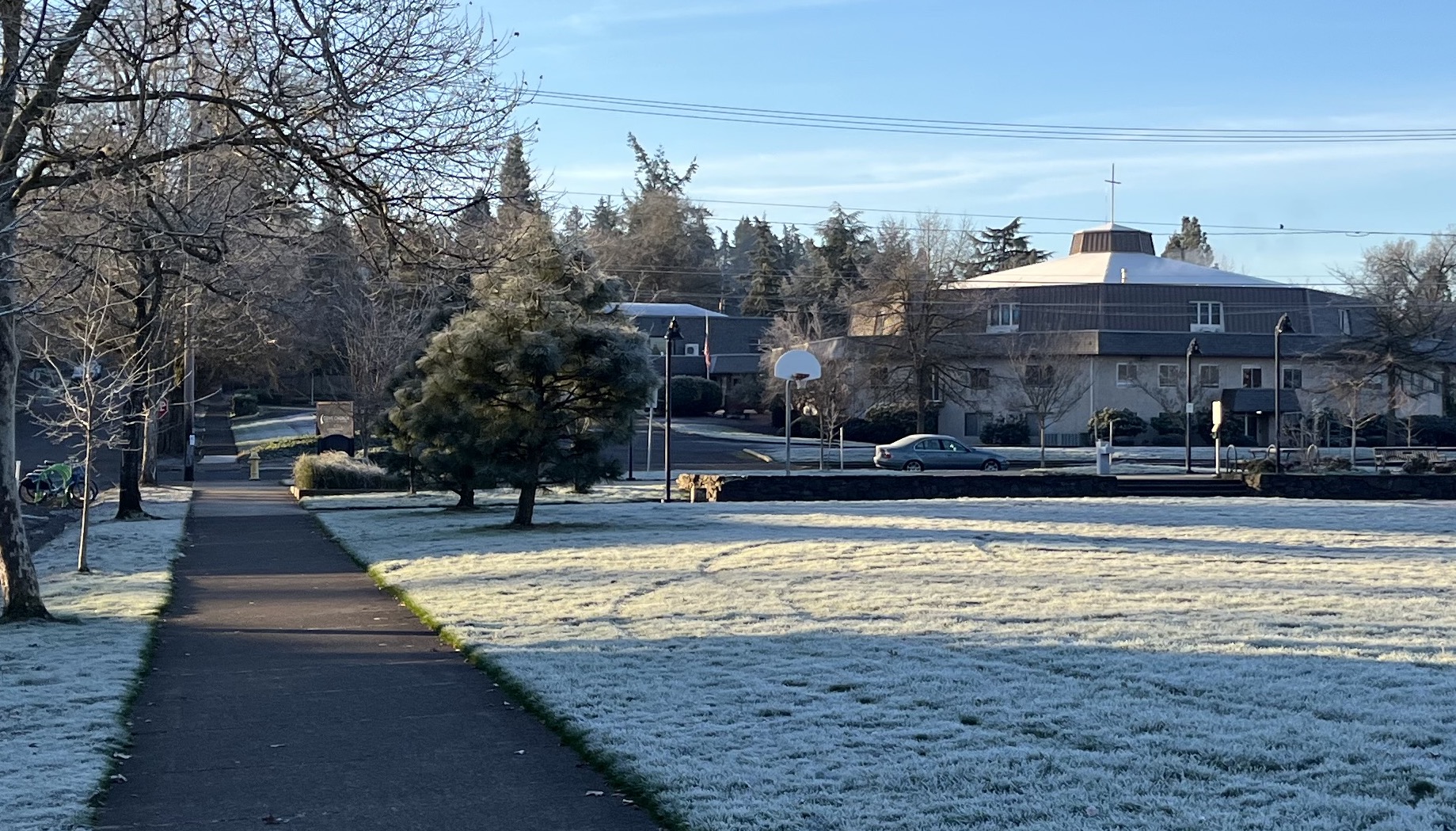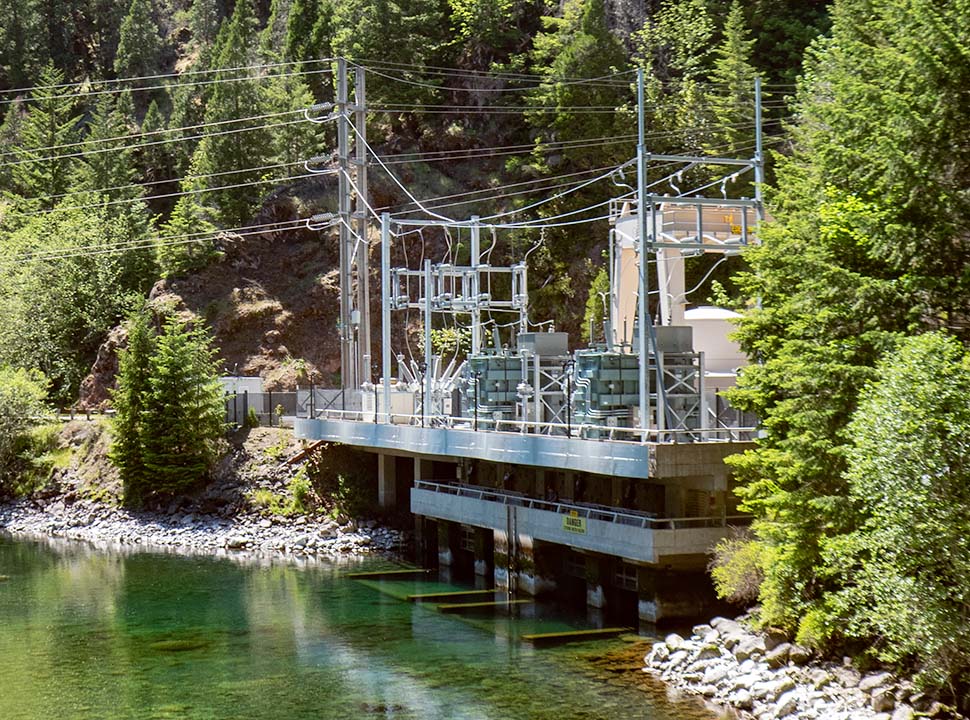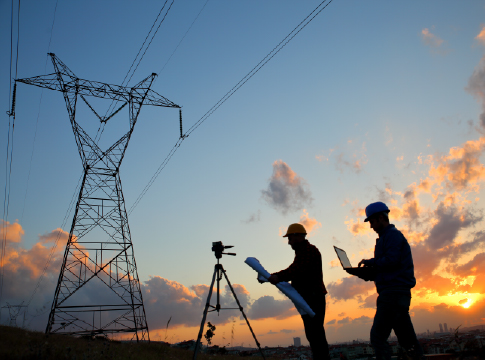Related News
Related News
-
EWEB prepares for wildfire season with risk mitigation measures
EWEB is building a more resilient electric system to weather various types of disasters, from wildfire to winter storms.
Find Out More -
Sustainability Snapshot - Homes for Good May 2025
Our first Sustainability Snapshop highlights a project where EWEB teamed up with longtime partner, Homes for Good, to deliver ductless heat pumps to income-eligible apartment rentals.
Find Out More -
EWEB environmental specialist wins prestigious awards for publication
Article recounting EWEB’s efforts to protect the McKenzie River after Holiday Farm Fire earns national recognition
Find Out More -
Last Call for EWEB/Lane County Septic Grants
Holiday Farm Fire recovery program now eligible for businesses, residential property owners who purchased post-fire, to cover inspection costs and new construction
Find Out More -
EWEB, Lane County host open house to gather feedback for “Leaburg Transportation Alternatives Analysis”
“What is the Future of the Leaburg Dam Bridge?” open house exhibit on display at Lloyd Knox Park Visitor Pavilion through July 25
Find Out More -
EWEB Pilots New Line Safety Program for 4th graders.
This year, EWEB is ramping up power line safety for children, specifically 4th graders.
Find Out More -
Improving habitat resiliency throughout the Upper McKenzie
Environmental Responsibility is a core guiding value for EWEB decision-making. This summer, EWEB continues its commitment to environmental stewardship with a robust slate of habitat enhancement updates throughout the upper McKenzie River, across the footprint of the Carmen-Smith Hydroelectric Project.
Find Out More -
EWEB weighs multi-billion-dollar decision affecting energy supply
EWEB is weighing energy supply decisions that will cost nearly $2 billion over the next two decades.
Find Out More -
Habitat Restoration Underway on McKenzie River
Partners at EWEB, McKenzie River Trust, the McKenzie Watershed Council, and the U.S. Forest Service broke ground on a major floodplain restoration project in Quartz Creek.
Find Out More -
Infrastructure upgrades at Nightingale Hosted Shelters made possible through powerful public-nonprofit partnership
Nightingale Hosted Shelters, EWEB, and the City of Eugene celebrate infrastructure milestone
Find Out More -
EWEB opens applications for 2025 Electric Mobility Community Grant
The Eugene Water & Electric Board is now accepting applications for the 2025 Electric Mobility Grant, reinforcing EWEB's commitment to sustainability and cleaner transportation.
Find Out More -
Walterville Hydroelectric Project to remain offline through 2025
EWEB continues to pursue repair plans but must fulfill additional investigation requirements before resuming operation.
Find Out More -
Watch the Recording: Financial Preparedness for Disasters
How will you financially recover after a disaster? This seminar gives key insights into preparing your finances ahead of time.
Find Out More -
Greenpower subscribers vote to award Greenpower Grant to SquareOne Villages
The Greenpower Grant, funded solely by voluntary customer subscriptions, supports local sustainability projects.
Find Out More -
EWEB reaffirms commitment to resilience with Wildfire Mitigation Plan approval
The utility is testing new equipment, leveraging technology, and incorporating third-party expertise to bolster electric system resiliency to a range of threats, including wildfire.
Find Out More - Show More
Frigid weather drives highest energy demand of the winter so far
January 28, 2025 • Aaron Orlowski, EWEB Communications

The sub-freezing overnight low temperatures in January led to the highest energy demand so far this winter as electric heaters across Eugene struggle to keep homes and businesses warm.
Demand for electricity in EWEB's service territory hit this winter’s the highest levels yet on the morning of Tuesday, Jan. 28 at 8 a.m., when overall demand hit 475 megawatts. That day, low temperatures skimmed 20 degrees F in Eugene.
That level surpassed the demand on Monday, Jan. 27, when demand hit 469 megawatts, even though Mondays often bring higher demand as managers of commercial buildings reheat them after turning down thermostats over the weekend.
Surging electricity demand during this cold snap is a powerful reminder that in the Pacific Northwest, when temperatures fall, demand for electricity rises. In EWEB’s service territory, winter electricity demand surpasses summer demand because roughly three-quarters of homes have electric heating, while air conditioning is less common.
This season’s peak winter demand is higher than during last year’s notorious ice storm, when demand for EWEB’s electricity peaked at 448 megawatts on Jan. 12, 2024. During the ice storm, the power outages caused by the storm’s damage to EWEB’s electric distribution counteracted some of temperature-induced demand.
Peaks in the mid-400s are high, but still within normal levels for cold winter days. In the last five years, the highest electricity demand occurred on Feb. 23, 2022, when demand hit 483 megawatts at 8 a.m. That day, the overnight low temperature descended to 22 degrees.
But even that level of demand is well below EWEB’s all-time record, which took place on Dec. 9, 2013, when temperatures plummeted to -10 degrees F. That morning at 9 a.m., EWEB customers were consuming 557 megawatts of electricity, as heaters worked full-bore to keep homes warm.
“This cold spell – and every cold spell, including last year’s ice storm – shows us the inextricable link between weather and both energy demand and supply,” said Brian Booth, EWEB’s chief energy resources officer. “EWEB’s energy team is always assessing electricity demand and supply as we look ahead hours, days, weeks, months, years and decades. Our job is to keep the power flowing, no matter what Mother Nature throws at us.”
In the years ahead, as more and more customers electrify their heating systems, demand for electricity during cold snaps will only grow. EWEB predicts that energy demand will rise by 8% over the next decade, as more and more customers swap out their gas-powered cars for electric vehicles, and as industrial demand rises.
“These cold events test the reliability of our region’s energy supply,” Booth said. “To maintain the momentum of our region’s transition from burning coal and gas to relying on clean electricity, we need to keep that electricity reliable, whatever it takes. Without reliable electricity, people won’t switch to electric vehicles or electric heat pumps because of fear the power will go out when they need it.”
EWEB is studying options to bolster future energy supply.
To ensure EWEB continues to have a reliable, affordable and environmentally responsible supply of electricity for decades to come, the customer-owned utility conducts long-term energy supply planning.
In 2023, EWEB published its first such study in a decade. EWEB concluded that the foundation of EWEB’s energy supply should continue to be the Bonneville Power Administration (BPA), a federal agency that sells power from dams on the Columbia and Snake Rivers. But BPA is changing the energy “products” that it offers, and EWEB will need to choose a new one in 2025.
So, for the last year, EWEB has conducted analysis to see which of the new products best meets the utility’s energy needs. Regardless of which product EWEB chooses, the utility will use a combination of its own resources and BPA energy product to meet customers’ needs and contribute towards overall grid reliability.
The crux of the decision comes down to who will meet the energy needs of EWEB’s customers on the highest demand days for the next 20 years. Those peak demand days typically coincide with the coldest days of the year.
BPA offers different levels of service to utilities like EWEB. In essence, EWEB must choose how it will meet peak demand: The utility can either take a do-it-yourself approach or rely on BPA.
One option is for EWEB to pay BPA a premium to always meet EWEB’s peak demand, no matter how high it gets. The other option is for EWEB to continue meet its own peaks, while paying a lower price for the other energy that BPA sells.
“Hydropower from BPA is the foundation of our energy supply portfolio and will continue to be as long as BPA maintains its position as a cost-effective provider of carbon-free power from the federal hydropower system,” said Ben Ulrich, the lead energy resource analyst who is overseeing the study of the BPA product options. “But we have a nuanced, difficult choice to make about how we will rely on BPA to help provide electricity for customers during those moments of extremely high demand.”
Related Programs
Here in Eugene, we are fortunate to have one of the cleanest power portfolios in the nation, with almost no electricity sourced from fossil fuels.
EWEB’s Integrated Resource Plan (IRP) will analyze possible energy resource portfolios with a goal of creating useful insights for long-term (20-year) electricity supply planning decisions.




